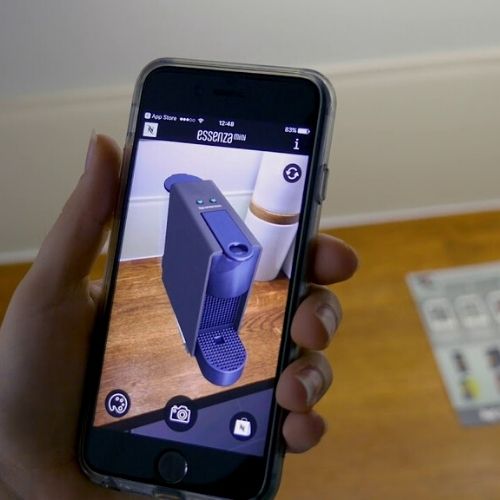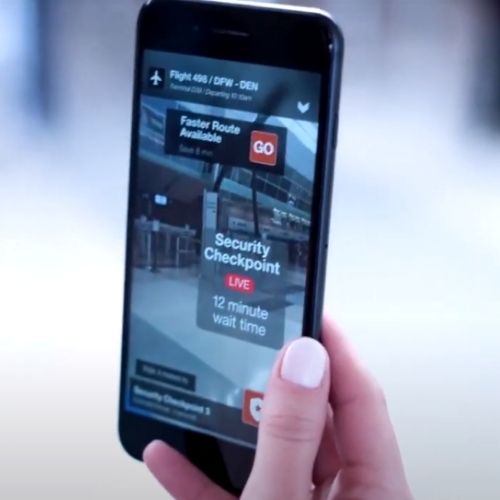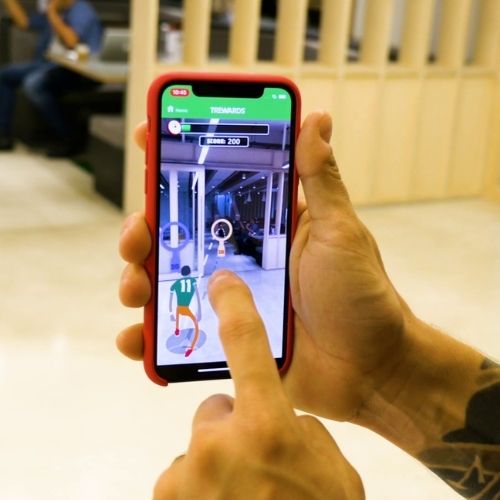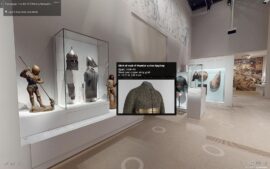The augmented reality market is developing dynamically. This is facilitated by the development of the technology itself, its dissemination and the emergence of new ways to use and apply it.
The Russian market has developed a number of typical solutions with augmented reality, i.e. the ways of using it. They can also be called mechanics.
We called these solutions typical because
– They are understandable for customers and end users
– Customers regularly ask for the implementation of these solutions
– There is a proven effectiveness of applying these solutions
So, among the typical augmented reality solutions, we have distinguished:
AR-presentation
 |
A solution for presenting a product or service in augmented reality. It can be used to demonstrate products and services. The advantage is the ability to show objects in realistic form, in 3D, using animation and interactivity (opportunities for the user to interact with the object in augmented reality). Saves time and money on transportation or travel to real objects. Creates a wow effect. Suitable for demonstration purposes at exhibitions, sales and as company marketing material. Serves product/service memorability through an unusual interaction experience. Examples:Mercedes-Banz AR presentation |
AR-navigation
| This solution can be divided into two categories: indoor and outdoor navigation. Indoor navigation is used to navigate the user indoors and show content along the way. In addition to the utilitarian function (navigation), the solution solves the problem of information, advertising and entertainment. AR navigation is used in airports, offices and exhibitions. An example is the airport navigation from American Airlines. In augmented reality, a “guide” can be implemented, usually a 3D character, which is followed by the user. Either along the floor or walls, indicating the direction.Outdoor navigation is used for open spaces. In augmented reality, the user sees cues guiding him along a given route. In addition to cues, augmented reality can contain other content, such as entertainment or advertising.Store indoor AR navigation |
 |
AR-quest
 |
The solution is a game mechanic. The mechanics itself can be anything, depending on the client’s objectives and imagination. An augmented reality game can be a standalone solution or an additional activation as part of an advertising campaign. The most prominent and recognizable example of an AR game is Pokemon Go, which earned $1 billion in 2019. Examples of other solutions: AR quest for McDonald’s |
AR-portals
| The solution, which is a 360 video in augmented reality. The user can view the video by walking through the portal. The video itself can show a room, a museum, or a fictional world. It is used to visualize and create a wow effectExamples: |
AR-helper
 |
A solution using augmented reality glasses. Typically used in industry, manufacturing, architecture and construction, medicine, logistics. It helps improve the efficiency of operations, reduces the requirements for personnel qualification and the number of errors, saves time, reduces costs, increases safety. AR-assistant is a digital layer between the user and the object of work. Instructions, 3D objects, videos, etc. can act as a digital layer. Voice control and remote communication with the specialist and colleagues is also possible. Boeing’s AR Assistant has shown the following results: an increase in productivity of 25% and a decrease in the number of mistakes made during operations to 0%. |
AR-catalogue
| Solutions for presenting products in augmented reality. As a rule, it is implemented as an opportunity to view products in augmented reality from the product card on the website. This solution became especially popular during the coronavirus pandemic with the growth of online shopping. And if previously the functionality of viewing the selected product was a pleasant option for the buyer, now, at a time when all sellers are competing online, it is becoming a competitive advantage and almost a necessity. Studies show that 40% of shoppers are willing to pay more for a product if they have the opportunity to test it in AR before buying it. The AR-catalogue reduces the percentage of returns and barriers to purchase, and increases conversion into sales. All of this is because augmented reality allows for a realistic 1:1 view of the product. Once you have placed the chair or refrigerator you like in your apartment, it will be easier for you to make a purchasing decision.AR catalog example |
 |
AR for product packaging (AR FMCG)
| A qr-code or other marker is placed on the product packaging, which activates the augmented reality when the device’s camera is pointed at it. This marketing tool does not serve to increase sales or attract the attention of customers in the store. But it solves no less important tasks, namely increasing loyalty, brand awareness, engagement, and time of interaction with the product. Augmented reality mechanics can range from a recipe book for ketchup packaging to full-fledged game mechanics and brand-storytelling, as in the Flying Farm case study. Or you can place an augmented reality character associated with a brand or advertising campaign, and users will take photos of him, take selfies and post them on social media. Indicative cases for AR on packaging are: |
The LikeXR portfolio contains cases for each of the typical augmented reality solutions. We invite you to take a look at them and order augmented reality for your business. Augmented reality is an effective tool for solving business tasks in different industries (from marketing to logistics) and for different functions (from marketing to sales).



